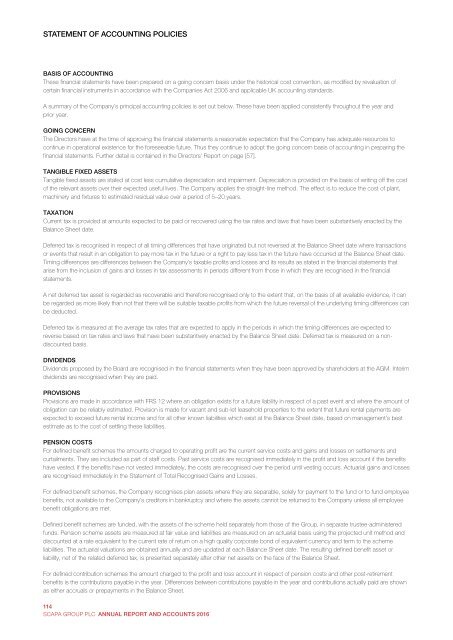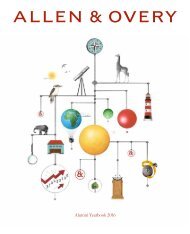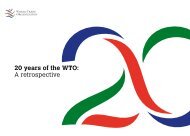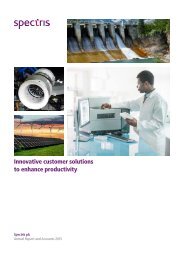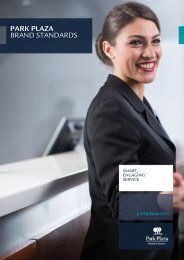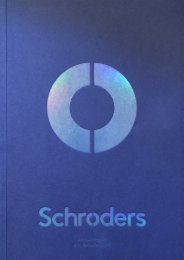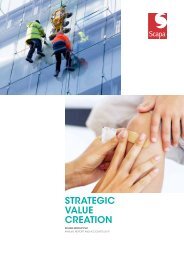20645_Scapa_AR_160504
You also want an ePaper? Increase the reach of your titles
YUMPU automatically turns print PDFs into web optimized ePapers that Google loves.
STATEMENT OF OF ACCOUNTING POLICIES POLICIES<br />
BASIS OF ACCOUNTING<br />
These financial statements have been prepared on a going concern basis under the historical cost convention, as modified by revaluation of<br />
certain financial instruments in accordance with the Companies Act 2006 and applicable UK accounting standards.<br />
A summary of the Company’s principal accounting policies is set out below. These have been applied consistently throughout the year and<br />
prior year.<br />
GOING CONCERN<br />
The Directors have at the time of approving the financial statements a reasonable expectation that the Company has adequate resources to<br />
continue in operational existence for the foreseeable future. Thus they continue to adopt the going concern basis of accounting in preparing the<br />
financial statements. Further detail is contained in the Directors’ Report on page [57].<br />
TANGIBLE FIXED ASSETS<br />
Tangible fixed assets are stated at cost less cumulative depreciation and impairment. Depreciation is provided on the basis of writing off the cost<br />
of the relevant assets over their expected useful lives. The Company applies the straight-line method. The effect is to reduce the cost of plant,<br />
machinery and fixtures to estimated residual value over a period of 5–20 years.<br />
TAXATION<br />
Current tax is provided at amounts expected to be paid or recovered using the tax rates and laws that have been substantively enacted by the<br />
Balance Sheet date.<br />
Deferred tax is recognised in respect of all timing differences that have originated but not reversed at the Balance Sheet date where transactions<br />
or events that result in an obligation to pay more tax in the future or a right to pay less tax in the future have occurred at the Balance Sheet date.<br />
Timing differences are differences between the Company’s taxable profits and losses and its results as stated in the financial statements that<br />
arise from the inclusion of gains and losses in tax assessments in periods different from those in which they are recognised in the financial<br />
statements.<br />
A net deferred tax asset is regarded as recoverable and therefore recognised only to the extent that, on the basis of all available evidence, it can<br />
be regarded as more likely than not that there will be suitable taxable profits from which the future reversal of the underlying timing differences can<br />
be deducted.<br />
Deferred tax is measured at the average tax rates that are expected to apply in the periods in which the timing differences are expected to<br />
reverse based on tax rates and laws that have been substantively enacted by the Balance Sheet date. Deferred tax is measured on a nondiscounted<br />
basis.<br />
DIVIDENDS<br />
Dividends proposed by the Board are recognised in the financial statements when they have been approved by shareholders at the AGM. Interim<br />
dividends are recognised when they are paid.<br />
PROVISIONS<br />
Provisions are made in accordance with FRS 12 where an obligation exists for a future liability in respect of a past event and where the amount of<br />
obligation can be reliably estimated. Provision is made for vacant and sub-let leasehold properties to the extent that future rental payments are<br />
expected to exceed future rental income and for all other known liabilities which exist at the Balance Sheet date, based on management’s best<br />
estimate as to the cost of settling these liabilities.<br />
PENSION COSTS<br />
For defined benefit schemes the amounts charged to operating profit are the current service costs and gains and losses on settlements and<br />
curtailments. They are included as part of staff costs. Past service costs are recognised immediately in the profit and loss account if the benefits<br />
have vested. If the benefits have not vested immediately, the costs are recognised over the period until vesting occurs. Actuarial gains and losses<br />
are recognised immediately in the Statement of Total Recognised Gains and Losses.<br />
For defined benefit schemes, the Company recognises plan assets where they are separable, solely for payment to the fund or to fund employee<br />
benefits, not available to the Company’s creditors in bankruptcy and where the assets cannot be returned to the Company unless all employee<br />
benefit obligations are met.<br />
Defined benefit schemes are funded, with the assets of the scheme held separately from those of the Group, in separate trustee-administered<br />
funds. Pension scheme assets are measured at fair value and liabilities are measured on an actuarial basis using the projected unit method and<br />
discounted at a rate equivalent to the current rate of return on a high quality corporate bond of equivalent currency and term to the scheme<br />
liabilities. The actuarial valuations are obtained annually and are updated at each Balance Sheet date. The resulting defined benefit asset or<br />
liability, net of the related deferred tax, is presented separately after other net assets on the face of the Balance Sheet.<br />
For defined contribution schemes the amount charged to the profit and loss account in respect of pension costs and other post-retirement<br />
benefits is the contributions payable in the year. Differences between contributions payable in the year and contributions actually paid are shown<br />
as either accruals or prepayments in the Balance Sheet.<br />
114<br />
SCAPA GROUP PLC ANNUAL REPORT AND ACCOUNTS 2016<br />
109<br />
Annual Report and Accounts 2016 <strong>Scapa</strong> Group plc


